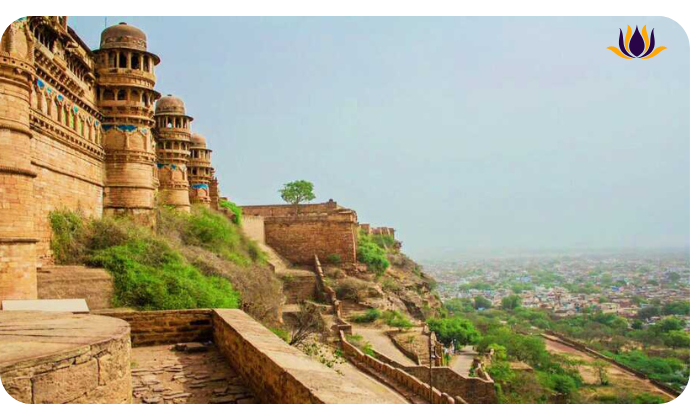The Magadh Empire was one of India’s most significant ancient empires, with a vibrant history that spanned several centuries. It was founded around the 6th century BCE in the present-day Indian state of Bihar and existed until the 4th century BCE.
Early History:
The early history of the Magadh Empire is shrouded in mystery, with very little known about its origins. The first known ruler of Magadh was Bimbisara, who ascended to the throne in around 543 BCE. Bimbisara was a patron of the Buddha and is said to have been instrumental in spreading Buddhism in India.
The Decline of the Magadh Empire:
In 321 BCE, the Magadh Empire was conquered by Chandragupta Maurya, who founded the Mauryan Empire. Under the Mauryan Empire, Magadh became the center of a vast and powerful empire that extended across much of India. Chandragupta Maurya was succeeded by his son Bindusara, who expanded the Mauryan Empire further.
The Mauryan Empire reached its zenith under the rule of Emperor Ashoka, who ascended to the throne in 268 BCE. Ashoka is known for his efforts to promote Buddhism and his edicts inscribed on rocks and pillars throughout the empire.
After the decline of the Mauryan Empire, the Magadh Empire regained its independence and became a powerful kingdom once again. The next prominent dynasty to rule Magadh was the Shunga dynasty, which Pushyamitra Shunga founded around 185 BCE.
The Shunga dynasty was followed by the Kanva dynasty, which ruled Magadh from around 72 BCE to 30 BCE. The Kanva dynasty was succeeded by the Satavahanas, who led from around 30 BCE to 230 CE.
In the 4th century CE, the Gupta Empire emerged as a dominant force in India, and the Magadh Empire lost its importance. The Gupta Empire was followed by a succession of other empires, including the Mughal and British empires.
Legacy of the Magadh Empire:
Despite its decline, the Magadh Empire left behind a rich and vibrant legacy that has continued to influence Indian culture and society to this day. Magadh was a center of learning, culture, and trade, and its rulers significantly contributed to literature, art, and architecture.
Some of the most notable cultural achievements of the Magadh Empire include the construction of the ancient universities of Nalanda and Vikramashila, which were centers of learning and research for many centuries. The empire also made significant contributions to mathematics, astronomy, and medicine.
Expansion of the Magadh Empire:
Under the rule of King Ajatashatru, who ascended to the throne in around 491 BCE, the Magadh Empire began to expand and conquer neighboring territories. Ajatashatru is known for his military campaigns against the neighboring kingdoms of Kashi and Kosala, which led to the expansion of Magadh’s territory.
The expansion of the Magadh Empire continued under the rule of King Udayin, who ascended to the throne in around 460 BCE. Udayin is credited with establishing Pataliputra, which became the capital of Magadh and one of the most important cities in ancient India.
Administration and Society:
The Magadh Empire had a well-developed administrative system characterized by a strong central authority and a complex local governance system. The king was the ultimate authority in the empire, and a bureaucracy of officials and advisors supported his rule.
The society of the Magadh Empire was divided into various classes, including the Brahmins, Kshatriyas, Vaishyas, and Shudras. The empire was also home to a large number of Buddhist and Jain monks and scholars, who played a significant role in the cultural and intellectual life of the empire.
Art and Architecture:
The Magadh Empire was home to a rich and diverse art and architecture tradition characterized by a blend of indigenous and foreign influences. Some of the most notable architectural achievements of the Magadh Empire include the construction of the massive fortifications at Pataliputra and numerous temples, monasteries, and stupas.
The empire was also known for its sculptures, characterized by their expressive qualities and intricate details. The art of the Magadh Empire has had a lasting influence on Indian art. It continues to inspire artists and artisans to this day.
In short, the Magadh Empire was a significant force in ancient India and played a pivotal role in shaping the region’s cultural, social, and political landscape. Its legacy continues to be felt in modern India, and its achievements in art, architecture, and governance are a testament to the ingenuity and creativity of the people who lived in the empire.



Leave a Reply